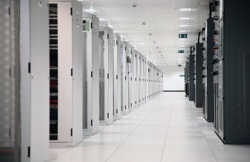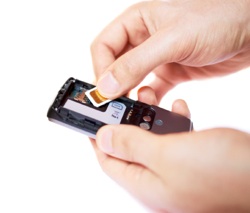A magazine where the digital world meets the real world.
On the web
- Home
- Browse by date
- Browse by topic
- Enter the maze
- Follow our blog
- Follow us on Twitter
- Resources for teachers
- Subscribe
In print
What is cs4fn?
- About us
- Contact us
- Partners
- Privacy and cookies
- Copyright and contributions
- Links to other fun sites
- Complete our questionnaire, give us feedback
Search:
A brief history of the digital revolution, part 2: they're everywhere!

The Royal Institution Christmas Lectures 2008 invited you on a high tech trek to build the ultimate computer. If you missed these fascinating lectures on channel Five you can still order the DVD and join Prof Chris Bishop on his exploration of the exciting world of computer science. The Christmas Lectures talk a lot about the current cutting-edge of computer technology, but what were things like in the early days of the digital revolution? The researcher for the 2008 Christmas Lectures, Lewis Dartnell, takes us through the story.
By the 1970s and 80s, computers had become cheap and wide-spread enough that a research lab or large company would have their own ‘mainframe’. The name comes from the fact that the central computer would be housed in a large room on enormous metal racks or frames, surrounded by all the air conditioning equipment and power cables it needed. Because such computers were still very expensive, everyone in the building might have their own keyboard and display screen on their desk, but they were all connected to the same central computer. This system actually worked quite well. A lot of the time, a computer can process data much quicker than a human can work and feed jobs to the processor. For example, as I sit here writing this article, my laptop works so quickly that the vast majority of the time it is simply waiting around for me to tap the next key or call up a website window. In the days of mainframes, a whole office could be sharing the same computer, typing letters or calculating accounts, and no-one would notice any delays on the system as they worked. Even with hundreds of people ‘time-sharing’ like this, a main-frame computer would still only be 90% busy.

Nowadays, many people have their own personal computer at home or in the office, and this is only possible because processors have got steadily cheaper over time, but they’ve also been getting much smaller and faster. For example, the Apollo Guidance Computer boasted over 4 kilobytes of program memory and ran calculations at a clock speed of just over 1 MHz. Even so, this state-of-the-art computer of the 1960s pales in comparison to the modern capabilities of even a tiny computer you probably have in your pocket right now. The SIM card in every mobile phone is actually a fully-fledged computer, running about 30 times faster than the Apollo guidance computer and packing over 200 times more memory, and all in something no bigger than your fingernail!
This incredible increase in computer power over just the last few decades has happened because engineers have been able to build smaller and smaller transistors to cram onto microchips, and the circuit designers are also creating more and more complex integrated circuits. The number of transistors squeezed onto a computer chip has been doubling roughly every 18 months since the 1970s. The latest microchips being manufactured by Intel now have individual transistors only 45 nanometres across – that’s twenty times smaller than even a bacteria cell! In fact, the transistors on modern computer chips are so tiny that they are smaller than the wavelength of visible light and it would be impossible to see or even produce them, if the computer scientists weren’t very clever with their manufacturing techniques.

Even the material that microchips are built on to is absolutely astounding. Microchips are made from thin wafers of silicon, which is a kind of substance called a semiconductor, halfway between a conductor (like the copper in a wire) and an insulator (like the plastic coating a wire). Transistors are built using semiconductors as it allows them to be switched on and off easily to build fast processing circuits. But any impurities in the silicon change its electrical properties and can ruin a microchip. So microchip manufacturing facilities use silicon wafers that are amazingly pure - 99.999999999% pure! That means that for every 100 billion atoms in the silicon board, just one of them is an impurity: an atom other than silicon. Or to put it another way, if every person on the planet held 15 apples in their hands, only a single one of them would be bad. It’s technology like this that’s driven the incredible shrinking of computers, and fundamentally changed the way people use them.
Computers have gone well beyond the big metal boxes sat on a desk, and are now hidden in a multitude of everyday objects you might never have thought of. This is known as embedded computing. Did you know for example that most modern mobile phones actually contain quite a few separate computers: alongside the SIM card, a phone might have another microprocessor to handle the radio communications and a second computer chip to run all the processor-hungry applications like fancy menus or playing games. MP3 players, cameras and games consoles can all have multiple processors inside them. Even lowly washing machines now have a microprocessor inside them, to calculate the washing cycle and drive the clothes drum motor as efficiently as possible. There’s probably already over 50 computers in your house alone, and a new family car could have over a dozen more, controlling everything from the fuel injection system in the engine to how firmly the brakes are applied to each wheel. In fact, over the course of an average day you’ll use about 150 embedded computers, mostly without ever realising it!
Read the beginning of the story in part 1.
To find out more about computers, watch the 2008 Royal Institution Christmas Lectures and join Prof Chris Bishop on his high-tech trek to build the ultimate computer. You can order a DVD of these lectures from the Christmas Lectures website. This website is an exciting extension to the Christmas Lectures, with five zones to explore and lots of fun games to play. Take the challenge to design your own fastest microprocessor chip or try to work out how the processing power of objects like mobile phones and MP3 players compare against each other.
The author, Lewis Dartnell worked as researcher for the Royal Institution Christmas Lectures. You can read more of his writing at lewisdartnell.com.


